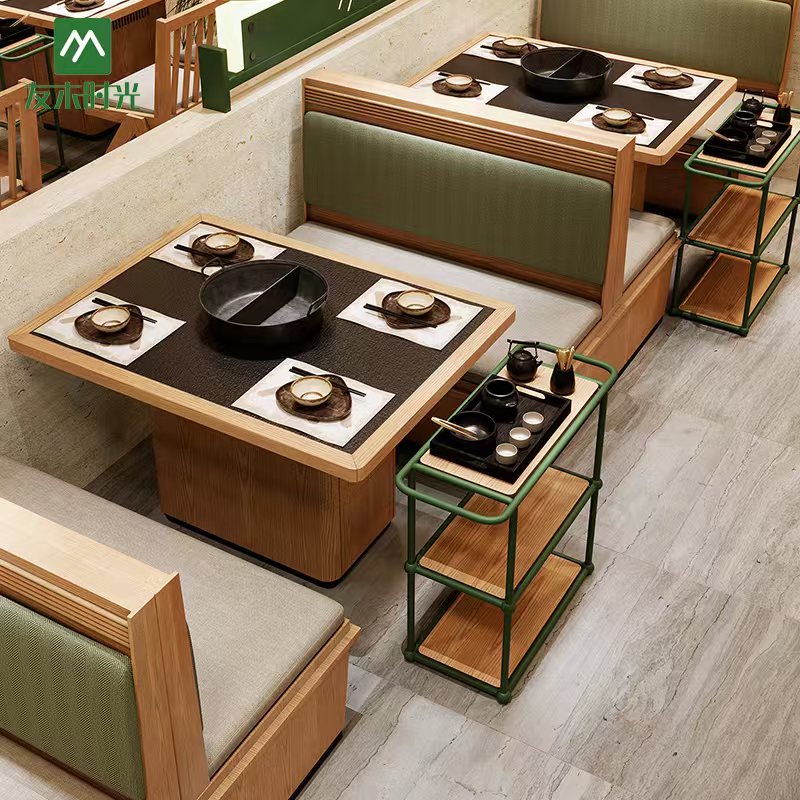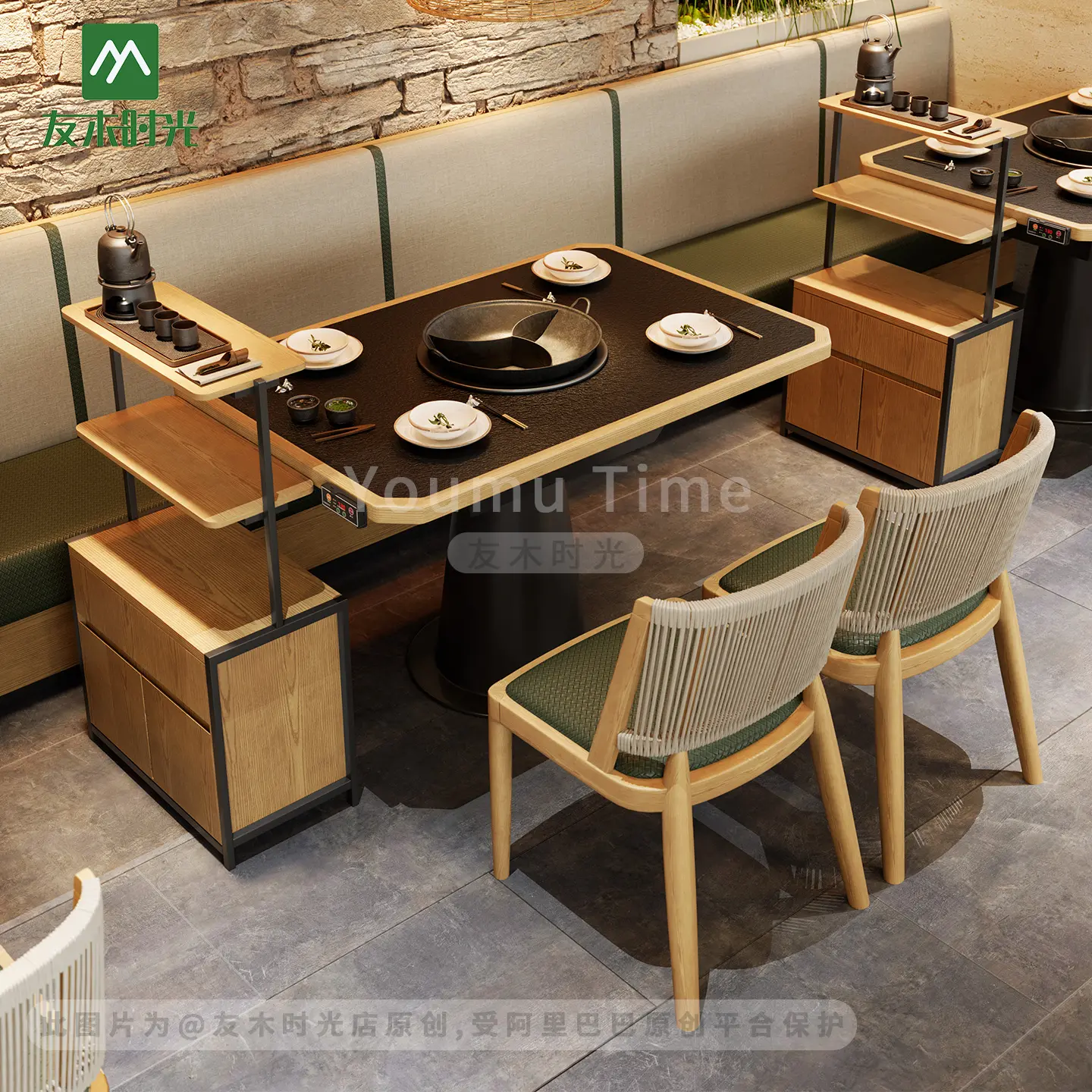The longer customers dwell in your commercial space, the more profits you will probably make. The chairs, booths, stools, and tables in your restaurant do more than fill space — they steer how long guests stay, how they behave, and ultimately how much they spend.
This article, delivered by Youmu Shiguang, a leading commercial restaurant furniture manufacturer, focuses on how concrete choices in レストラン家具 and restaurant seating design translate into measurable effects on dwell time and revenue, and gives practical, spec-level guidance you can apply right away.
Start With Your Objective and Constraints
Before selecting pieces, write a one-page furniture objective card that states:
- Primary goal: raise RevPASH (revenue per available seat hour) / increase AOV (average order value) / improve guest comfort. And guest comfort shall be on the first priority, according to the industrail experiences.
- Physical constraints: door widths, service lane minimum (90–100 cm), ceiling height, outdoor wind/load limits.
- Life expectancy target (e.g., 5 years commercial life).
Having these constraints up front makes every furniture decision measurable and defensible.
Which Seat Types to Use
Different seat types of restaurant furniture shape dwell behavior. Pick spot-specific solutions.
Hard dining chairs (wood / metal)
- Use: fast turnover sections, high-density dining.
- Why: compact, fast to get in/out, easy to clean.
- Key specs: seat height 45–48 cm, seat depth 40–45 cm, seat width 42–46 cm. Metal frames: 1.2–1.8 mm steel or 2–3 mm aluminum; powder coat thickness 60–80 µm for durability.
Therefore, these seats are rather suitable for quick-service restaurant, business lunch venue, or crowded coffee shop.
Banquettes & sofas (soft seating)
- Use: lounge corners, coffee & dessert areas, booths that encourage longer stays.
- Why: increases dwell time and AOV (drinks, desserts, second rounds).
- Key specs: seat depth 50–60 cm, back height 85–95 cm; foam HR density 35–45 kg/m³; recommended Martindale abrasion rating ≥40,000 for commercial fabrics. Make cushions removable and covers washable.
Owners of fine dining restaurant, upscale restaurant, lounge bar, and dessert shop are seeking for these seats, reported by our marketing department.
Bar stools / high seating
- Use: bar, quick-service counter, window seats for single diners.
- Why: short dwell by design; increases turnover.
- Key specs: bar height 105–110 cm, stool height 75–80 cm; include foot rings and anti-slide feet. For higher throughput choose backless stools; for slightly longer dwell choose stools with short backs.
Quick-service bar and open kitchen counter are the best places for them to go.
Modular & folding pieces
- Use: multipurpose spaces that must reconfigure for events or group bookings.
- Why: allow combining tables for parties without permanent loss of capacity.
- How to spec: use standardized connectors (cam locks, quick-pins), test for lateral stability, require dynamic load testing equal to commercial standards.
This kind of restaurant furniture is appropriate for hotel event space, community restaurant, and co-working cafe.
Material & Surface Choices that Reduce Downtime
Material selection impacts maintenance time — and that time of repairing a restaurant furniture kills turnover.
Tabletops
- Fast turnover: HPL (high pressure laminate) or compact laminate — scratch and stain resistant, easy to clean.
- Premium: engineered quartz or treated solid wood with protective sealant; require more upkeep but increase perceived value.
Frames & legs
- Indoor: powder-coated steel or solid wood with reinforced joinery.
- Outdoor: anodized aluminum or stainless steel (304) with salt-spray test passed for coastal locations.
Fabrics & leather
- Commercial fabric target: Martindale ≥30,000 (moderate) or ≥40,000 (heavy use).
- Flame retardancy: meet EN1021 / CFR 16 / local codes.
- Consider stain-resistant finishes (e.g., Teflon, PU coatings) and removable covers for rapid laundering.
Structural Details that Keep Seats Available
Design for maintainability — this reduces time a commerical seat is out of service.
Replaceable parts: design chairs with removable cushions, replaceable foot glides, and socketed legs, which can be fixed on-site. List spare part SKUs (e.g., cushion set, M8 hex bolt pack, plastic foot caps).
Hidden reinforcements: use steel gussets or internal plywood plates in high-stress joints. Require that all fastening hardware be standard sizes (M8/M10) for quick onsite replacement.
Testing: include bench marks in RFPs like, static load test (e.g., 10 kN on seat), 200,000 cycle seat drop or EN/ANSI equivalent, and abrasion test values.
Translate Objectives into Procurement Specs
If you are a restaurant furniture purchasing manager, facilities manager of a commerical place, or a restaurant operator, when you invite quotes, require measurable fields:
- Furniture category (chair / banquette / stool / table)
- Key dimensions (seat height, depth, width, back height)
- Materials (frame steel gauge, wood species, tabletop material)
- Finish specs (powder coat thickness μm, varnish type)
- Upholstery test values (Martindale rubs, fire rating)
- Load & durability test references (EN/ANSI/BIFMA standards)
- Replaceable parts list & lead time for spares
- Warranty period and coverage
Putting these into your RFP forces suppliers to bid on the same quantifiable baseline and helps you pick the configuration that supports your revenue goals
Maintenance & lifecycle thinking
Design so chairs are easy to service: detachable covers, swappable cushions, standard hardware. Offer clients a spare-parts kit (foot caps, cushion insert, bolt set) to minimize out-of-service time. For outdoor レストラン家具, specify UV resistance and a salt-spray rating for corrosive environments.
結論
The right decision turns furniture choices into a profit tool. レストラン家具 is not decoration; it’s a revenue instrument. By aligning restaurant seating design with a clear objective (higher RevPASH vs higher AOV), choosing the right seat types, materials and serviceable constructions, and codifying those into strict specs, you convert aesthetic decisions into predictable financial outcomes.
Your Reliable Restaurant Furniture Supplier – Youmu Shiguang
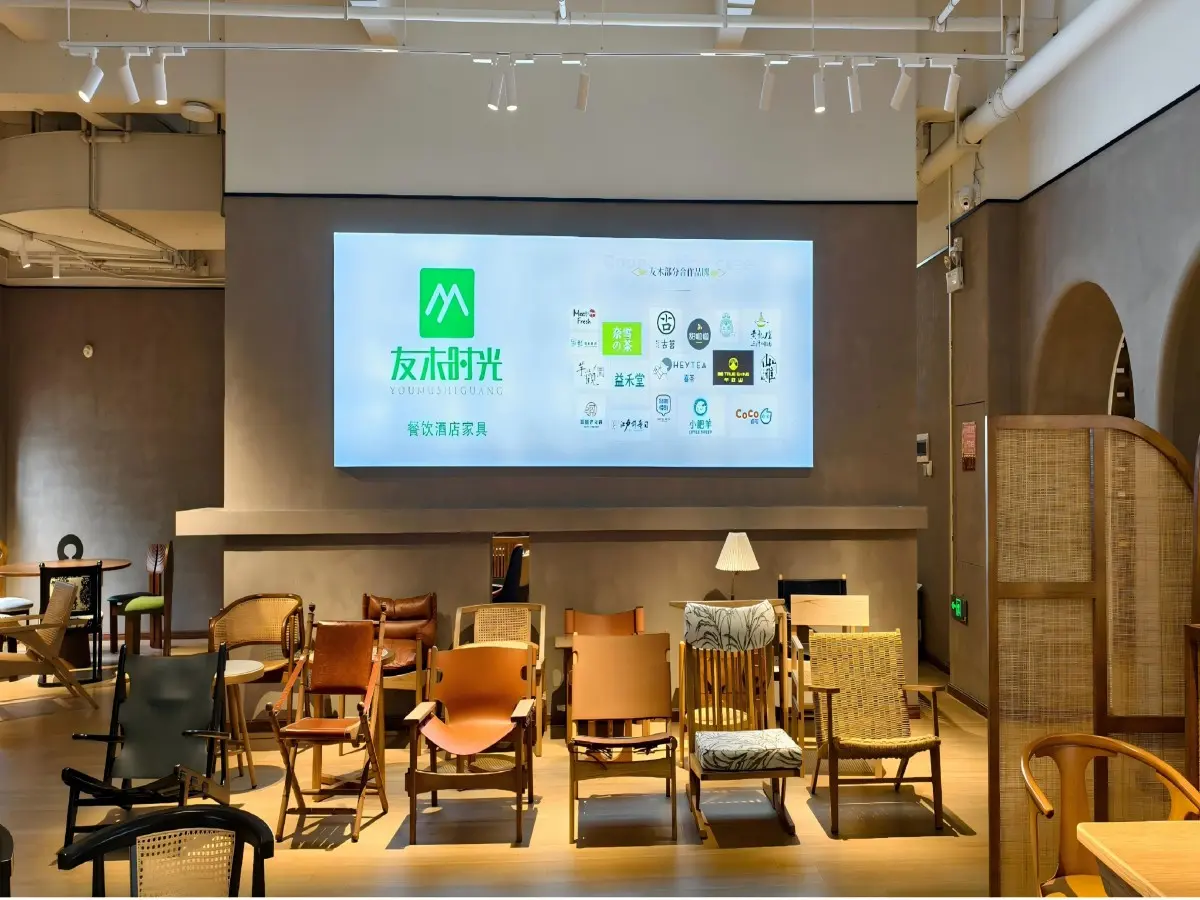
We, ユーム・シグァン, redefine reliability in commercial interiors. As a leading commercial furniture manufacturer, we operate our own production factories to ensure a stable bulk restaurant furniture supply and consistent quality. Our custom restaurant furniture solutions feature modular components for easy replacement and maintenance, backed by a strict QA system that fully aligns with international standards.

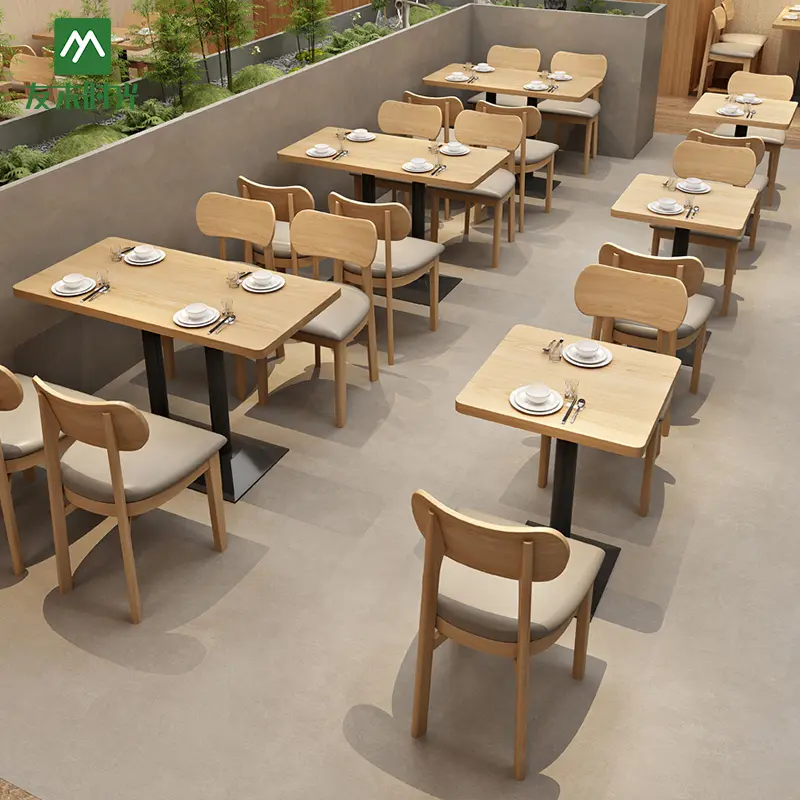
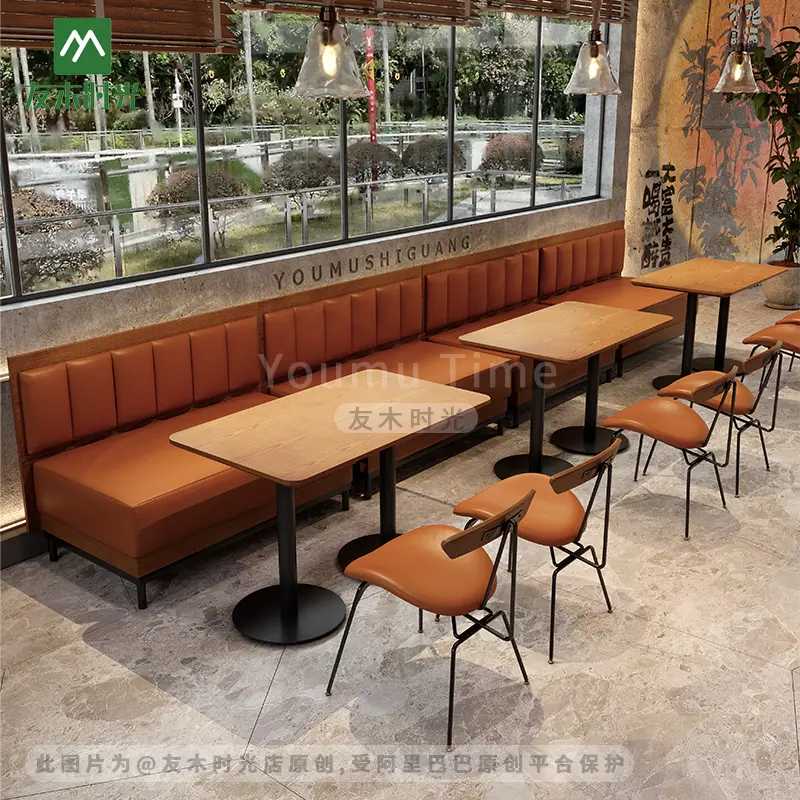
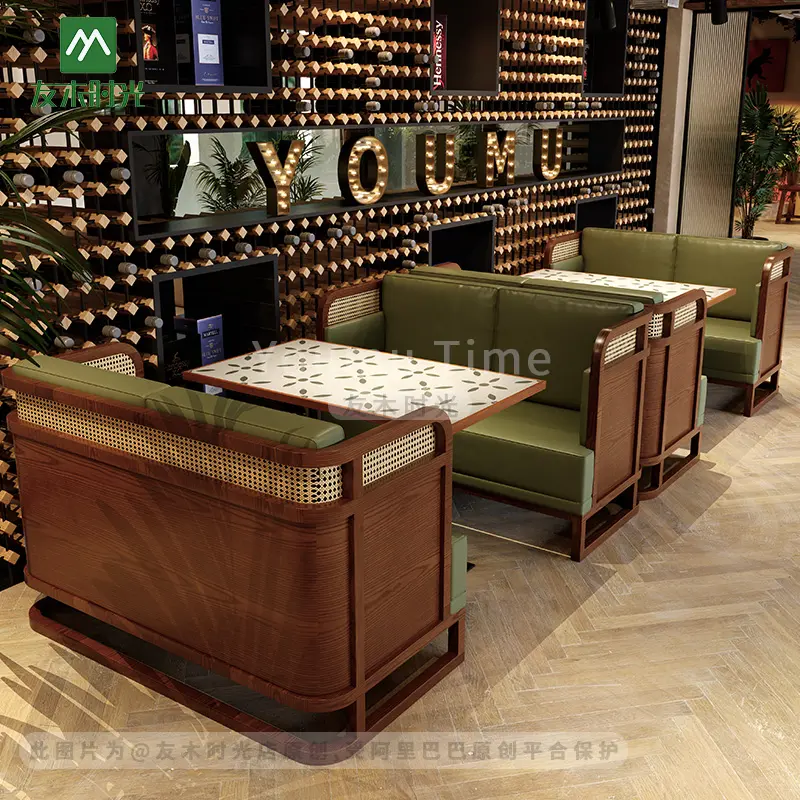
webp.webp)

